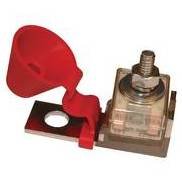porman
Guru
- Joined
- Aug 21, 2014
- Messages
- 1,065
- Location
- Seattle, Wa
- Vessel Name
- Beach Music II
- Vessel Make
- 2003 Mainship 430 Trawler
In preparation for replacing my old diode style battery isolator with a new Blue Seas ACR I made a diagram of my batteries and chargers. I noticed that the big 2/0 battery cables run directly from the batteries to the battery switches without any over-current protection. Calder says any run over 6 feet should have protection. My question is how many of you have protection on those cables? I've been on a lot of boats and never seen any.


